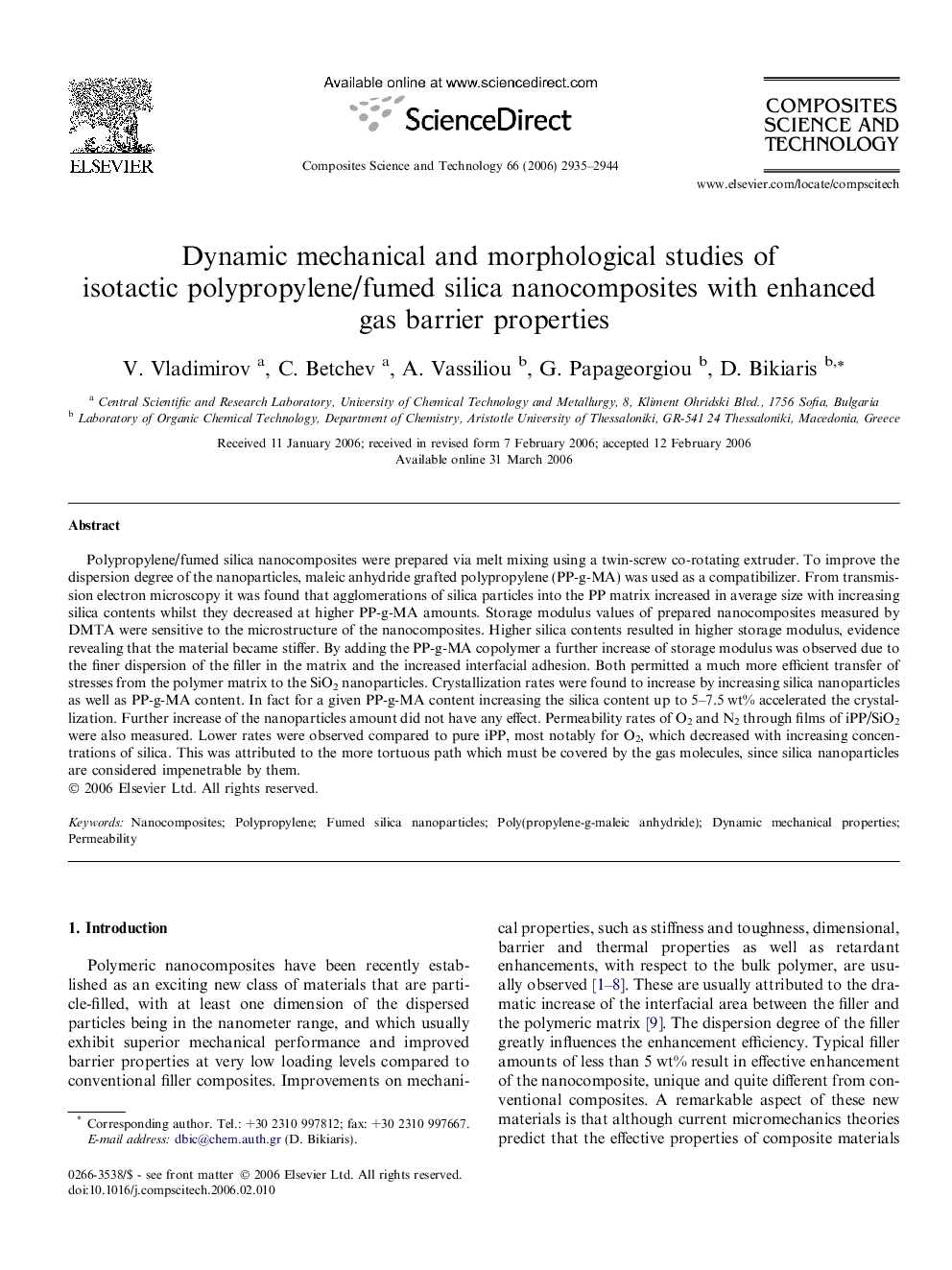| کد مقاله | کد نشریه | سال انتشار | مقاله انگلیسی | نسخه تمام متن |
|---|---|---|---|---|
| 822714 | 906805 | 2006 | 10 صفحه PDF | دانلود رایگان |

Polypropylene/fumed silica nanocomposites were prepared via melt mixing using a twin-screw co-rotating extruder. To improve the dispersion degree of the nanoparticles, maleic anhydride grafted polypropylene (PP-g-MA) was used as a compatibilizer. From transmission electron microscopy it was found that agglomerations of silica particles into the PP matrix increased in average size with increasing silica contents whilst they decreased at higher PP-g-MA amounts. Storage modulus values of prepared nanocomposites measured by DMTA were sensitive to the microstructure of the nanocomposites. Higher silica contents resulted in higher storage modulus, evidence revealing that the material became stiffer. By adding the PP-g-MA copolymer a further increase of storage modulus was observed due to the finer dispersion of the filler in the matrix and the increased interfacial adhesion. Both permitted a much more efficient transfer of stresses from the polymer matrix to the SiO2 nanoparticles. Crystallization rates were found to increase by increasing silica nanoparticles as well as PP-g-MA content. In fact for a given PP-g-MA content increasing the silica content up to 5–7.5 wt% accelerated the crystallization. Further increase of the nanoparticles amount did not have any effect. Permeability rates of O2 and N2 through films of iPP/SiO2 were also measured. Lower rates were observed compared to pure iPP, most notably for O2, which decreased with increasing concentrations of silica. This was attributed to the more tortuous path which must be covered by the gas molecules, since silica nanoparticles are considered impenetrable by them.
Journal: Composites Science and Technology - Volume 66, Issue 15, 1 December 2006, Pages 2935–2944